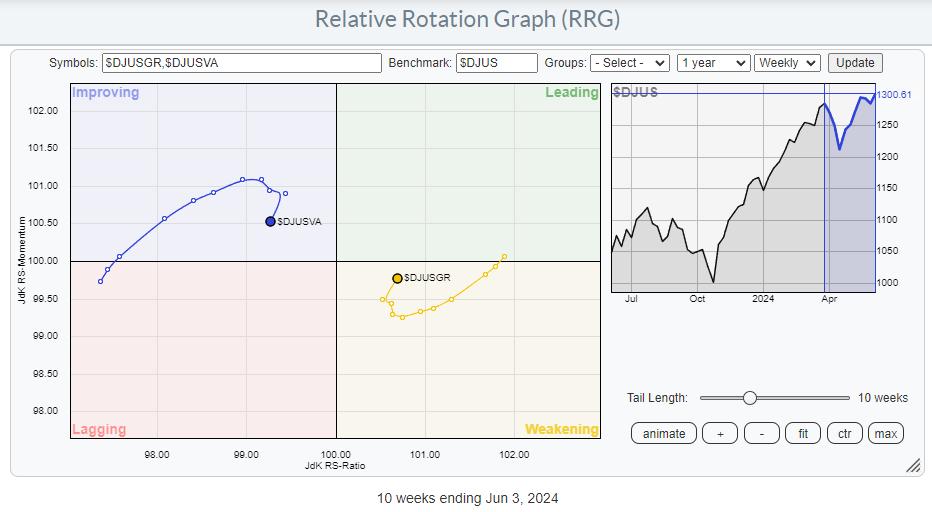Exploring the future of India’s power industry and leading companies

Power stocks: The growing trend of energy has solidified the dominance of specific power companies that generate and distribute electricity. The economy is on an upward trajectory as population growth and increased discretionary income lead to more consumer goods being purchased.
Demand has increased over time, affecting electricity prices. Our economy has recovered and is in a growth phase after the COVID-19 recession. In this article, we will look at the electric power industry and the companies that operate within it.
Industry Outlook
In terms of installed base, the India power market is expected to grow from 492.86 gigawatts (GW) in 2024 to 752.90 GW by 2029, registering a CAGR of 8.80% during the forecast period (2024-2029).


In the long term, the market is likely to be driven by factors such as government policy support, increasing electricity consumption due to infrastructure projects, and population growth.
NOTE: If you want to learn candlestick and chart trading from scratch, here is the best book available on Amazon! Buy the book now!


On the other hand, significant investments are required to build and modernize the generation, transmission and distribution networks, and a lack of private sector investment is likely to hamper the expansion of India’s power industry.
Nevertheless, India has abundant solar radiation and receives solar energy throughout the year. This has provided significant prospects for harnessing solar energy in the sunniest parts of India, including Rajasthan, Gujarat and Andhra Pradesh. The above-mentioned factors, along with foreign investment and large-scale power projects, provide opportunities to expand the power industry in India.
Thermal energy still dominates the power market.
Despite the recent increase in awareness of green energy use, fossil fuels still dominate the market. It will take considerable time to transition and a sustainable environment will develop slowly.
India has extensive coal reserves, which are widely available and very cheap fuel for electricity generation. The country’s huge coal reserves have made it a major producer and consumer. thermal power plant An attractive alternative to meet the growing demand for electricity.
Moreover, India has a well-developed infrastructure for coal-fired power generation. Many coal mines, transportation networks, and coal-fired power plants are already in operation. This existing infrastructure is the basis for a dominant position in the market for thermal power generation.
Also in September 2022, the Indian Ministry of Energy said the country plans to install up to 56 GW of coal-fired power capacity by 2030 to meet its growing electricity demand. The 25% increase in coal-fired power capacity would exceed the 204 GW of coal-fired electricity currently produced by 285 coal-fired power plants.
Why Are Electricity Stocks Rising After COVID-19?
Since the COVID-19 pandemic, electricity stocks have risen significantly due to several important variables. First and foremost, the ongoing global economic recovery has boosted industrial activity, commercial activity, and electricity demand. This increased demand has provided immediate benefits to electricity companies, increasing their earnings potential and thus their stock value.
In addition, governments around the world have adopted major stimulus packages to restart their economies since the outbreak. These packages often include infrastructure spending, such as renewable energy projects and grid upgrade programs. These investments improve the growth prospects of electric companies operating in these industries, boosting investor confidence and boosting share prices.
There has also been a notable shift toward renewable energy sources as part of global efforts to combat climate change. This shift has been further accelerated by increased investment in solar, wind, and other renewable technologies since COVID-19. As a result, companies focused on renewable energy generation have experienced investor interest and increased stock valuations.
A combination of economic recovery, government stimulus, renewable energy growth, and investor optimism around favorable fiscal conditions have led to a surge in power stocks post-COVID-19, reflecting a larger trend toward sustainable energy solutions and a resilient power industry.
How big will the transformation be in the power industry?
The transformation of the Indian electricity industry, driven by government initiatives, is expected to be significant and disruptive. The Indian government has set targets to increase the share of renewable energy in the country’s power mix.
Policies such as the Green Energy Corridor project, which aims to integrate renewable energy into the grid, are crucial to ensuring the stability and reliability of power supply.
This transition aims to increase renewable energy capacity and efficiency, promote electric mobility, and modernize infrastructure. These efforts are expected to reduce dependence on fossil fuels, protect the environment, and promote long-term economic prosperity. As a result, India’s power industry will undergo a paradigm shift, with renewable energy playing an increasingly important role in meeting the country’s growing energy needs while demonstrating commitment to global climate goals.
Also read…
India’s top power stocks
Tata Power
Tata Power It has an installed/managed energy capacity of 14,690 MW and a renewable energy portfolio of 9,000 MW, operational and under implementation. It has a manufacturing capacity of 5,000 MW of solar cells and modules. It has a large utility-scale solar EPC order book of Rs. 12,900 crore.
According to recent records, the company plans to install 4 GW of renewable energy capacity in fiscal 2025, including 2.5 GW of third-party projects and 1.5 GW of utility-scale projects. They have a total pipeline of 5.4 GW to be completed over the next two to three years.
Tata Power plans to invest Rs 15,000-20,000 crore annually in capital expenditure over the next few years, which is an increase from its previous forecast, mainly for renewable energy projects. The company reiterated its target to double revenue, EBITDA and profit between FY23 and FY27.
They remain confident in their ability to achieve this growth trajectory. Tata Power will now prioritize hybrid, 24-hour, robust renewable energy projects over standalone solar/wind projects to maximise returns. The company expects more states to privatise power distribution post-election, creating opportunities similar to the successful Odisha model. They see all states as potential candidates for distribution privatisation.
Adani Power
In a recent transcript, Adani Power The company plans to double its existing capacity from 15.25 GW to 30.67 GW by FY29-30 through a combination of internal growth (6.4 GW under construction/development), brownfield expansion (4.8 GW) and acquisitions (4.22 GW). Under a conservative scenario, APL is expected to generate EBITDA of Rs 38,500 crore by FY29-30 from Rs 18,789 crore in FY24. This corresponds to a recurring EBITDA of Rs 1.25 crore per MW.
APL plans to maintain a high percentage of contracted capacity, with 85% currently tied up in long-term/medium-term contracts. This will provide consistency and visibility to revenues. The company plans to continue to secure a significant portion of its fuel requirements through long-term contracts, with 79% of its domestic fuel requirements currently secured through long-term/medium-term contracts.
APL has set a goal to investigate net carbon neutral options by 2024-25 and achieve single-use plastic-free certification across all operating locations by 2024-25, as well as reduce GHG emissions. Emission intensity Target of 0.84 tCO2e/MWh by fiscal year 2025.
JSW Energy
JSW Energy They aim to reach 10GW capacity from 7.28GW by FY25. They have a long-term target of 20GW by 2030 and are confident that they will achieve this ahead of schedule.
The company plans to spend around ₹15,000 crore in capex in FY25, up from ₹8,000 crore in FY24. This is to complete around 2.7 GW of projects and battery storage projects. JSW Energy is evaluating battery cell manufacturing. They see significant opportunities in energy storage and expect 8-9 GW of battery storage capacity in India by FY27.
The energy company focuses on renewable energy projects including wind, solar and hybrid models. They recently won a bid for 3.6 GW of renewable energy capacity. JSW Energy is in discussions with JSW Steel for the first phase of a 6.2 GW renewable energy supply contract. They expect to finalize the discussions and sign the PPA in the June quarter of 2024.
(main)
(main) We have set a target of achieving 60 GW of renewable energy capacity by FY32. We plan to operate 3 GW of renewable energy capacity in FY25, 5 GW in FY26, and 8 GW in FY27.
They plan to award 15.2 GW of new thermal capacity soon. They expect to award 10,400 MW of coal capacity in FY25, 3,200 MW in FY26 and 1,600 MW in FY27. They expect a consolidated group CAPEX of Rs 35,000-50,000 crore per annum for the next 2-3 years.
The standalone CAPEX target for FY25 is Rs 22,700 crore. Small modular reactors (SMRs) and other novel nuclear technologies are being explored. Battery energy storage systems are also being developed.
Torrent Power
at Torrent Power‘s latest draft, the company plans to invest Rs 20,000 crore over the next two to three years, primarily in renewable energy and transmission projects. This is in addition to its regular annual capital expenditure of Rs 2,000 crore for its distribution business.
Torrent Power has 3GW of renewable energy projects in the pipeline, including solar, wind and hybrid projects. The company is exploring opportunities in: Green hydrogen This is under the PLI scheme and a pump storage hydro power project is planned in Maharashtra.
They are awaiting regulatory decision on their parallel distribution license application in Maharashtra. They have also started initial operations in a new special investment area near Mehsana, Gujarat. The company expects strong demand in the commercial power market and higher utilization of gas-based power plants in the future.
conclusion
As we come to the end of the article, we have seen how prominent and important the power industry is. We have also looked at some of the companies operating in the power industry and the guidelines they have. In this era, the increase in consumer goods can create more demand, and new trends in new era technology, data centers, and electronic manufacturing can lead to the next generation of ideas at a wide level.
What do you think about the future of the electric power industry? Please leave your thoughts in the comments section below.
Written by Santhosh
The Trade Brains portal’s stock screener, stock heatmap, portfolio backtesting, and stock comparison tools give investors comprehensive tools to identify the best stocks, receive stock market news, and make informed investments.


Start your stock market journey today!
Want to learn how to trade and invest in the stock market? Check out FinGrad’s exclusive stock market courses, a learning initiative from Trade Brains. Get ahead in your trading career by registering for free courses and webinars from FinGrad today. Join now!!



